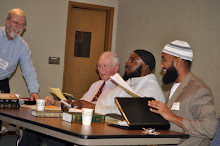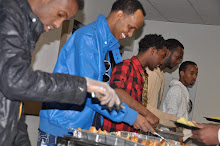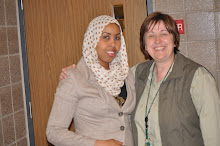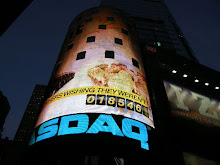Read Comments(139)Recommend (7)Print this page E-mail this article Share Del.icio.us
Facebook
Digg
Reddit
Newsvine
Buzz up! If it passes, the money raised by approval of the first question on the St. Cloud school district's property tax referendum would change little within the district.
It would provide about $5.9 million a year for the next six years to maintain programs and services. Class sizes would stay the same. The money would cover growing operations costs such as fuel and energy. One clear change would be that secondary students who lost the option to ride the bus to school because they live too close to school would get that opportunity back. Money also would sustain junior and senior high school activities.
If question one fails, supporters and school officials say the effects would be devastating.
"It's absolutely key. If we don't get question one, it's nasty," said Barclay Carriar, a St. Cloud financial adviser who is one of three people leading the campaign to pass the tax increase.
While supporters aren't playing favorites as they seek community support for a three-question, $10.25 million property tax increase, they are clear that if question one goes down it will change the outlook of St. Cloud schools, possibly for years.
"How many ways can I say essential? I don't know how strongly I can word it. It is a crisis in order to not have to make devastating cuts in our programs," board Chairwoman Deb Lalley said.
Board member Jerry Von Korff, who spent last week explaining the proposals to St. Cloud City Council and Stearns County County Board members, is equally as dire in his descriptions.
"We will be in the worst financial position the district has ever been in," Von Korff said.
The district, which has a $88 million budget to support 9,500 students and 1,500 employees, has made more than $20 million in reductions since 2002, according to district records.
Proposal foundation
The whole proposal hinges on that first ballot question. St. Cloud schools would be looking at more than $4.3 million in reductions if it fails. In addition, all the new or expanded programs offered in questions two and three that might attract voters with children or relatives interested in those programs, would sink with it. If question one fails, questions two and three will also go down regardless of their vote totals.
School officials are less concerned about losing the new proposals than losing millions for programs that are already in place if the vote goes down in question one.
Superintendent Steve Jordahl last month completed a proposal that shows what would be lost if question one goes down. That list includes 35 to 55 teachers. Up to two schools could close, junior high school activities would be eliminated and layoffs in administration and support services are expected.
"If it fails, there are going to be a lot of changes that are not going to be good for children," said Jordahl, who arrived in St. Cloud July 1 after three years as superintendent in Barnesville. "(Question) one is one we must have passed."
One person who said she understands the gravity of the situation is Jean Haley, a retired nurse. She was eating lunch at Whitney Senior Center while Jordahl and school volunteers handed out fliers promoting the tax increase.
"I'll support it because I always support good education in Minnesota," Haley said.
St. Cloud school district will almost certainly return to the voters in 2009 for a third straight try at getting a tax increase passed, Jordahl said. In 2007, voters rejected a plan that would have renewed a tax approved in 2003. The district made $1.5 million in reductions and used reserves to close a $4 million shortfall.
The proposals in question one are similar to what voters approved in 2003. Voters approved that tax increase in four questions.
This time, wrapped in one question is money to maintain the current class size ratios and money to maintain present levels of activities.
The district dropped bus routes and pushed the boundary to two miles for secondary students to ride the bus to school for free as part of the 2008-2009 budget reductions.
An approved question one would restore the boundary to one mile. About $500,000 will be dedicated to the district's fund balance, a reserve account that provides cash flow and a financial safety net.
Breaking it down
The most expensive part of question one is $2.7 million that will be used for what the district calls operations. It includes money for energy, supplies, safety and security and general operating expenses.
The energy is fuel oil to heat the schools and the electricity for the lights. Supplies are the classroom materials and office supplies.
The safety and security dollars would be used to add more cameras in classrooms and provide paid monitors at all entrances at schools, Jordahl said.
One proposal in question one that would be noticeable is transportation. The plan calls for adding $317,000 to the budget to restore reductions to the bus program last year.
The district eliminated six bus routes and more than 300 students were no longer eligible to ride for free. About 60 are paying one of the district's contractors to ride the bus. The rest have had to find their own way to school.
If the vote passes, any student who lives outside a mile from school would get to ride the bus. If not, the one mile boundary for elementary students and two mile boundary for secondary students will remain.
About $1.8 million is proposed to retain the present level of teachers. Without the money from the property tax increase, up to 55 teachers would laid off. The district said that would increase the student-to teacher ratio by four students.
In 2003, the voter-approved tax increase allowed the district to pay for 35 additional teachers, reducing class sizes that had grown through previous budget reductions.
When the effort to renew that money last year failed, the district used reserve dollars to keep the teachers in place. That won't be an option next year, school officials say.
The reserves are anticipated to be spent down to about $2 million at the end of year. The district plans to spend $2.2 million from reserves in 2008-2009 to help balance the budget.
In an $88 million budget, $2 million is a small reserve and the district has to borrow money and pay interest to cover its monthly bills while it waits for state dollars to arrive. School finance experts suggest having 5 percent to 8 percent in reserves.
The district needs $4.4 million to reach 5 percent. The question 1 proposal calls for adding $500,000 a year to the fund balance to restore financial stability.
Monday, October 13, 2008
Subscribe to:
Comments (Atom)

















































